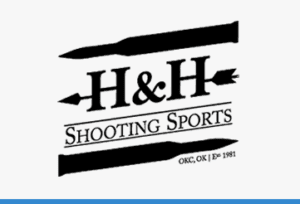Now, I’m pretty certain that I’ve spent more time on the range with the Range Officer than almost any writer with any gun magazine I can think of, and I’ve come to this conclusion: If you could only have one 1911, this should probably be it. I’ve never seen a 1911 exceed expectations like this one.
The RO is basically a defrilled Trophy Match with an MSRP of less than $1,000 (in many gun stores I’ve seen them tagged for slightly more than $700). It was as if some pistolsmith at Springfield was handed a build sheet for a fully loaded 1911, minus the second page. There’s no checkering, no funneled magazine well, no full-length guide rod and no high-gloss blued finish. There are adjustable sights and the same barrel used in a Trophy Match. In short, the idea was to make a very accurate pistol affordable.
Start with a full-size 1911-A1 with a frame and slide forged from steel rather than any of today’s lightweight specialty metals. This gives the RO the same handling characteristics as the original. But unlike the century-old classic, the RO utilizes a stainless steel match barrel and bushing. Barrel and bushing fit is perfect, as is slide-to-frame fit.
According to Springfield, “The RO has everything necessary to win a match, but there’s plenty of room to accessorize.” Probably so, but just because the RO has a minimalist appearance doesn’t mean that it’s a bare-bones GI gun. The ejection port is lowered and flared for reliable ejection. The frame has been modified to accommodate the beavertail grip safety, which works with the combat hammer, or “Lightweight Delta,” as Springfield labels it.
The Range Officer features an extended thumb safety, but Springfield saved a few dollars by orienting it for the greater population of right-handed shooters. “The safety was another area where we determined we could afford to sacrifice in order to lower the price,” says a Springfield spokesman. “For the 10 percent of the world who are left handed and want this pistol with an ambi safety, it’s an affordable accessory that can be added later.”
Controls still feature tactile serrations including the magazine release, safety, hammer and trigger shoe. And like most 1911s, serrations are still present at the rear on the slide slabs. Unlike Springfield Armory Loaded, TRP and Trophy Match models, the RO does not come with forward slide serrations. The absence of this particular feature does help reduce cost and is an aspect that can be easily addressed later by a gunsmith or with the use of something like skateboard tape.
The skeletonized aluminum trigger is adjustable for overtravel. Every trigger on the four Range Officers I’ve handled was exceptionally clean and crisp. With a consistent pull weight of just over four pounds, it’s not likely that you’ll resort to a trigger job after the purchase is made. Being a certified pistolsmith, I’d put my reputation on the quality of fitting in this model. Vertical play within the frame is minimal.
Unlike the checkering often applied to the frontstrap of the 1911, a checkered backstrap on this model is no extra cost to Springfield. Just like all Springfield 1911s, the key-locked safety system is integral to the mainspring housing and can be utilized to block the compression of the mainspring assembly required to cock the hammer. The mainspring housing is another component that can be easily switched out for an uncheckered or arched housing.
The sights are reminiscent of those used on competitive 1911s for bullseye matches since the late 1950s. Their profile certainly suggests that the intended use of the RO is as a 1911 that will spend most of its life at the range. The square front and rear blades are serrated to cut down on glare and work better than combat sights in obtaining the sharpest sight alignment necessary.
These match sights certainly bring out the best of the barrel and fit. When I obtained an early production sample last fall, Payton Miller and I took it to Chillicothe Sportsmen’s Club for chronograph and accuracy testing. The results were jaw-dropping. The gun averaged two-inch groups at 25 yards from the bench with everything (including 185-, 200- and 230-grain loads).
I completed our session shooting offhand, bringing back memories of standing shoulder to shoulder in bullseye competition a little more than a decade ago. I stood up, took a bladed single-hand firing position 25 yards in front of a bullseye target and slowly fired five shots. Payton—a confirmed two-handed shooter—was struck speechless at the 1.79-inch group produced with off-the-shelf Remington/UMC 230-grain ball.
Word quickly spread throughout our editorial office of the Range Officer’s accuracy, and since that first trip to the range, four staff members have purchased one. Although it’s not legal for NRA Bullseye Service Pistol competition, it’s certainly legal for divisions in the NRA Bianchi Cup, USPSA, IPSC, CDP, PPC and others. To help you get started, the Range Officer comes with a polymer holster, polymer double magazine holder and two magazines.
If Springfield also chambered the Range Officer in .38 Super and 9mm, it would fully expand the gun’s appeal in the competitive shooting market.
The author’s 25-yard offhand results quickly rekindled his old passion for bullseye competition.
by Eric R. Poole


